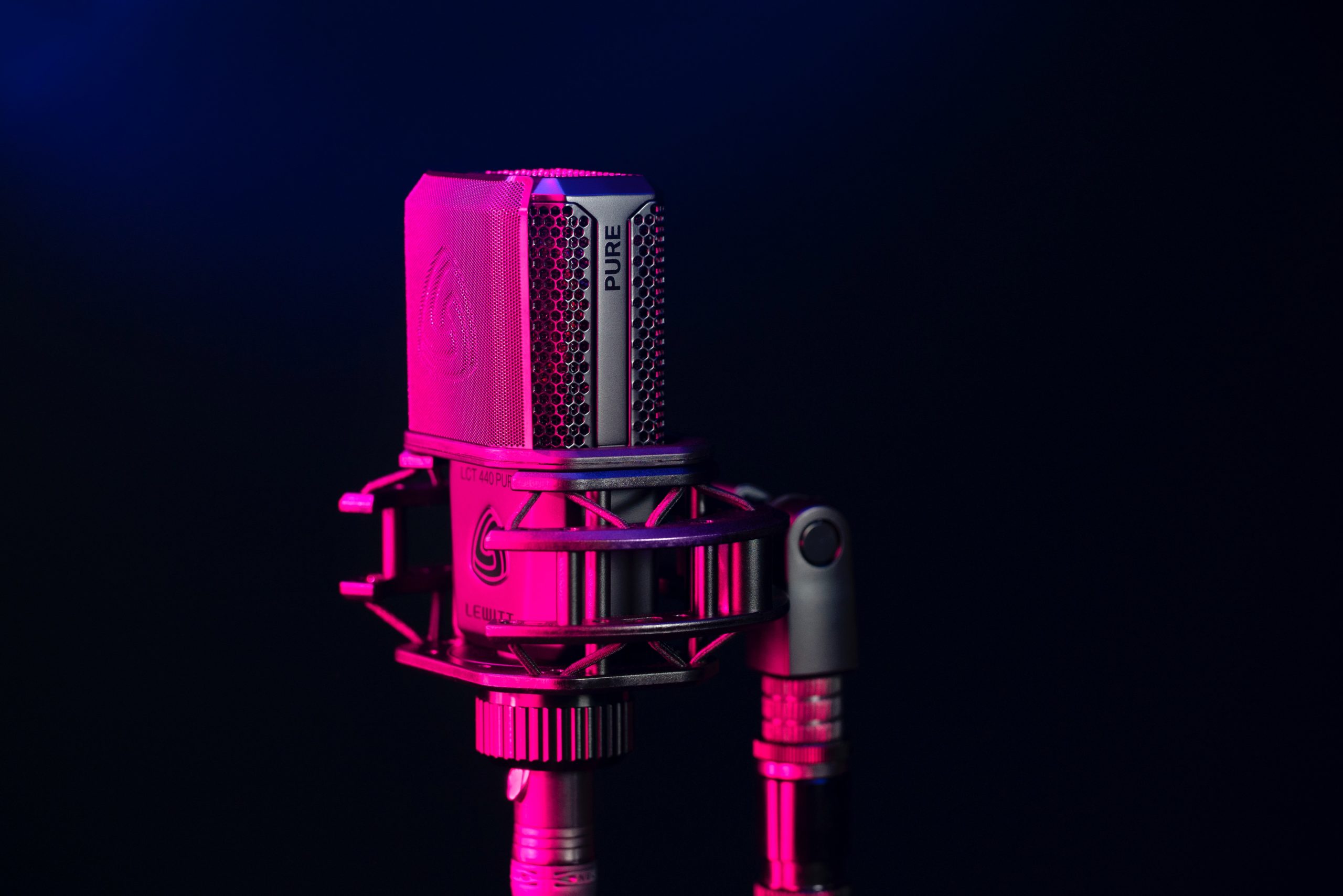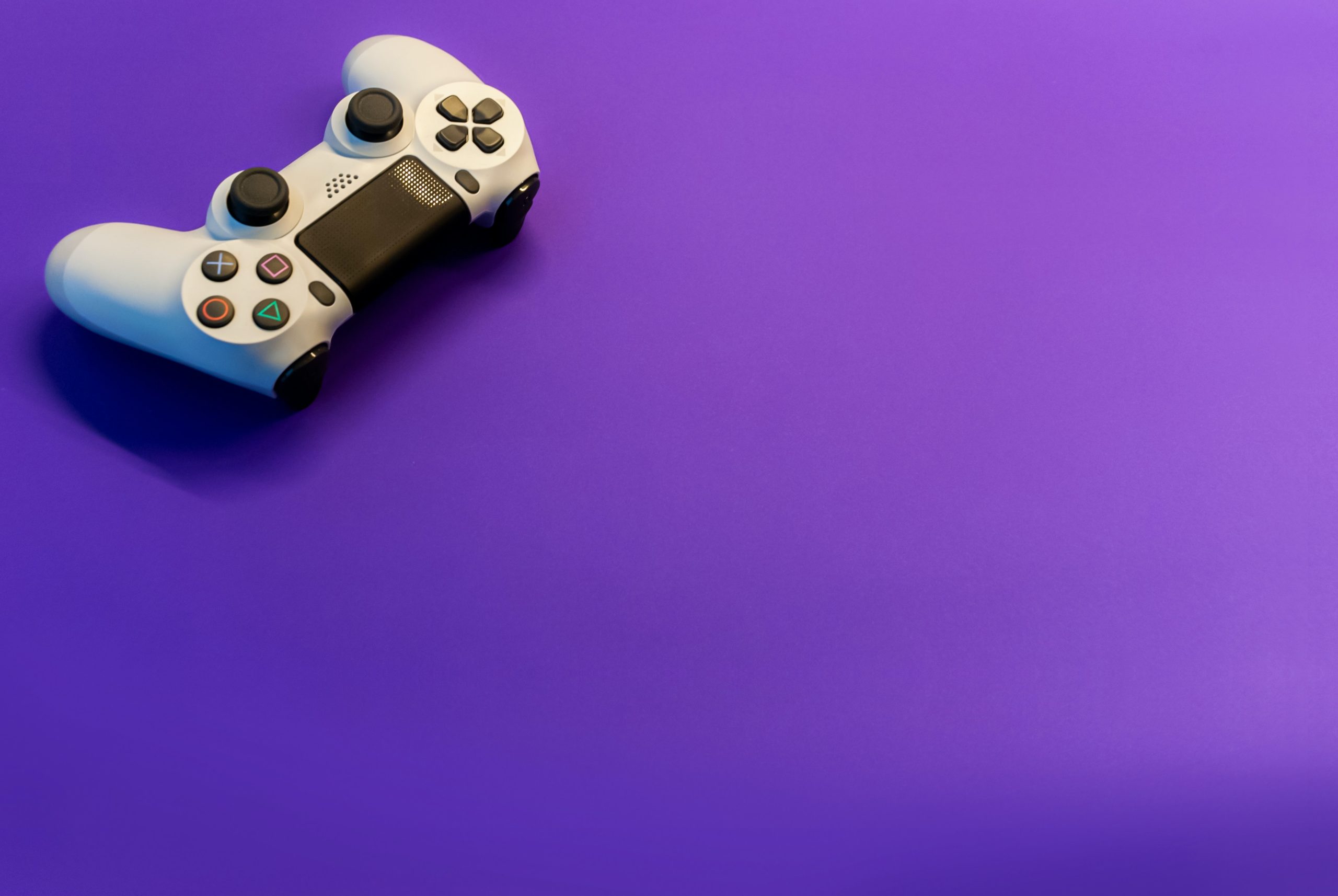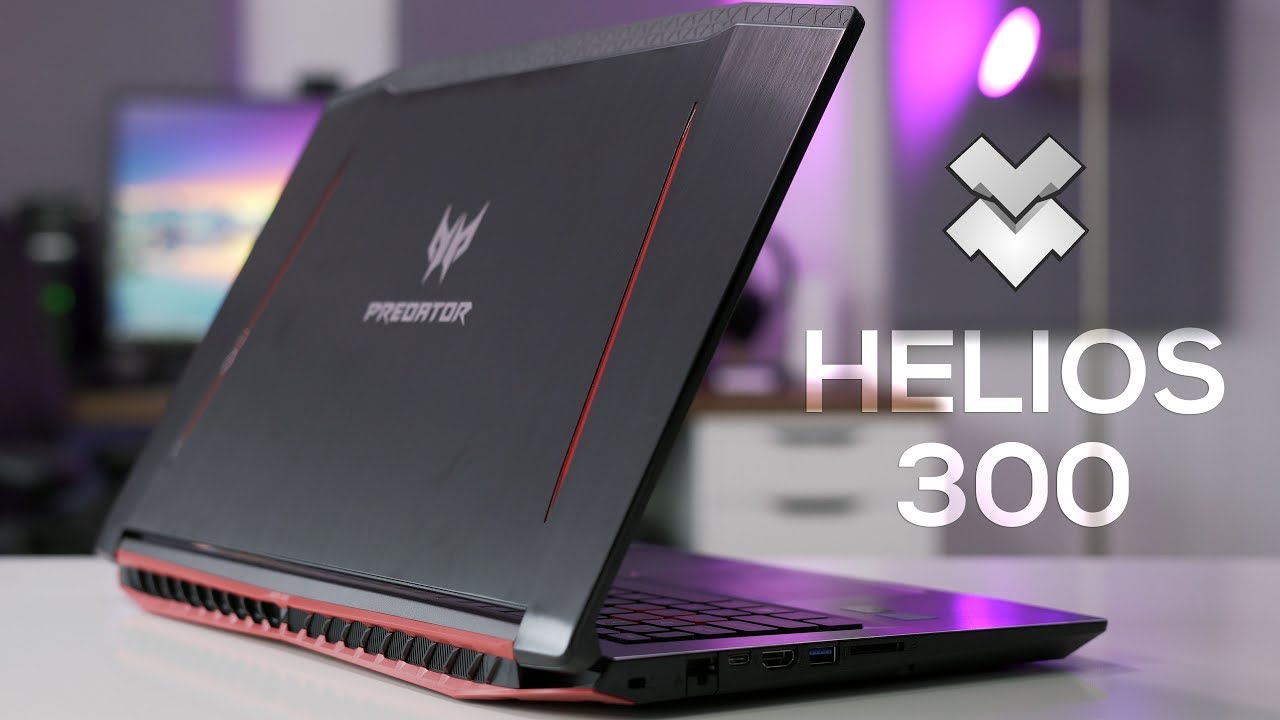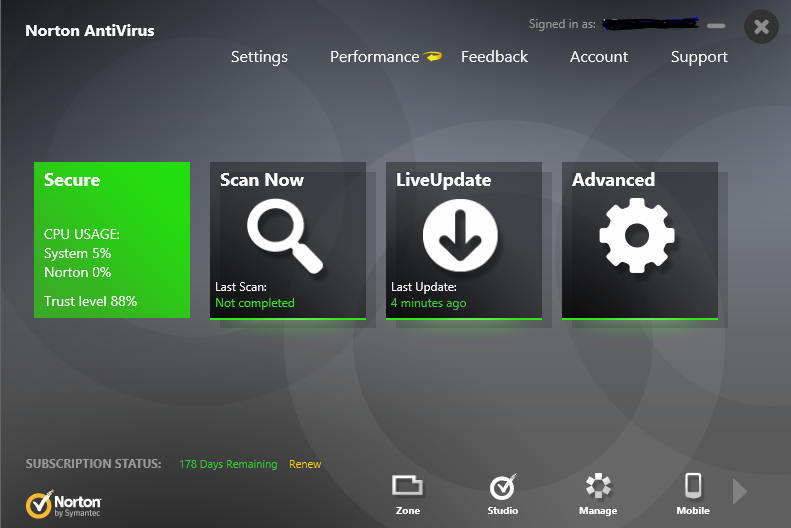Monitors these days come in a variety of sizes, from the 22 inch monitors all the way up to the gigantic 49 inch ones. Granted, there is a middle ground and that is the 27 inch monitor which is the most popular, and among ultrawide users the 34 inch monitor is more preferred. However, there is a size in between these that tries to provide the best of both worlds.
32 inch monitors used to be quite niche and elusive products, meant mainly for content creation and consumption. 32 inch monitors are awkwardly big with an aspect ratio of about 16:10 and feel like they might substitute for your television. Now however, the spotlight is on them and many companies are coming up with beautiful 32 inch displays meant for gaming and content creation as well.
Here is a guide to 32 inch monitors and the best ones in the market currently (along with some new ones coming soon in the future).
The Basics
The most commonly used monitors are usually 24 or 27 inches. The most commonly used ultrawide monitors are 34 inches. So what’s the big deal about 32 inch monitors? Well, they can serve as the middle ground for the transition from 27 inch monitors to 34 inch monitors. They are usually taller and bigger than their 27 inch and 34 inch counterparts yet come in the aspect ratios that are most common, that is, either 16:9 or 16:10.
These monitors are so unintuitively big that many manufacturers also ship 32 inch televisions meant for the living room instead. They certainly have their pros, however. The extra real estate afforded by 32 inch monitors provide easier viewing and the monitors may be kept some distance apart in order to ease the burden on the eyes.
As such, when thinking about purchasing a 32 inch monitor for your setup, you must consider how it will fit into your space, what the prices are and the features that you want.
The Market for 32 inch Monitors
32 inch monitors used to have a niche audience, but they are slowly but surely gaining widespread popularity among users, and gamers especially. Surprisingly, buyer interest around them is most focused in Australia, followed by the United States, United Kingdom and India which seems to be an outlier.
The recent lockdowns and quarantine in various countries around the world have particularly boosted sales in 2020 and 2021. The cheapest 32 inch monitors start around $150 and can go on all the way up to $4500 (yes, there are monitors at this range). They are made by all the popular brands such as Asus, Samsung, MSI, Dell, LG, Gigabyte, Lenovo and many others. You will surely be able to find the one you want with all the features you may need.
Features
Speaking of features, there are some that you might want to consider before buying your monitor.
Design
32 inch monitors may be made of plastic or have brushed metallic pieces. Many gaming 32 inch monitors have gamer aesthetics but that is slowly changing towards a more minimalistic design, which is favored by many and used by those monitors that are more productivity focused.
You should make sure that the design of your monitor will look good in your setup and will not hinder it aesthetically and physically. There are many VESA mounts available for 32 inch monitors which help to reduce the clutter and give a clean and solid look to your setup.
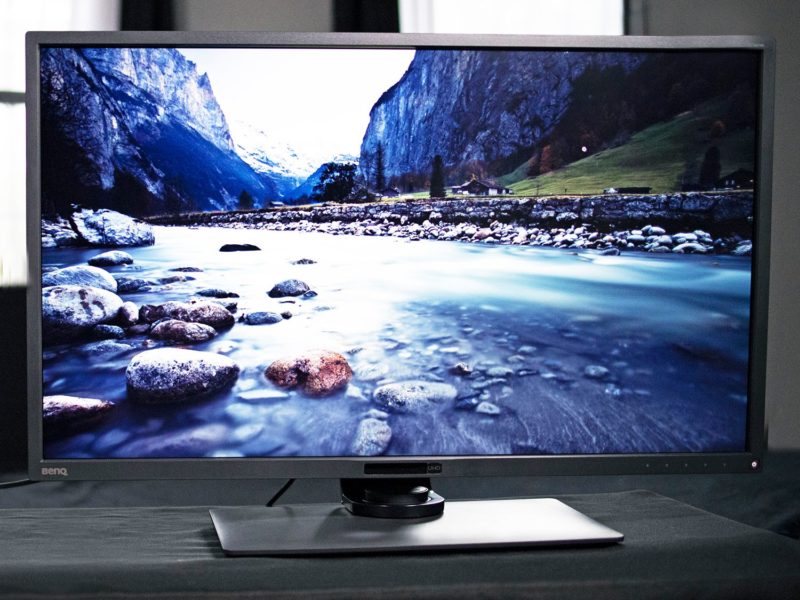
Ports and audio
The vast majority of 32 inch monitors will use HDMI 2.0/2.1, DisplayPort 1.2/1.4 or USB Type-C as their main connectors. In some cases the monitors come with mini-HDMI and mini-DisplayPorts. You will need to check your graphics card, PC and laptop ports to see which ports you want to use.
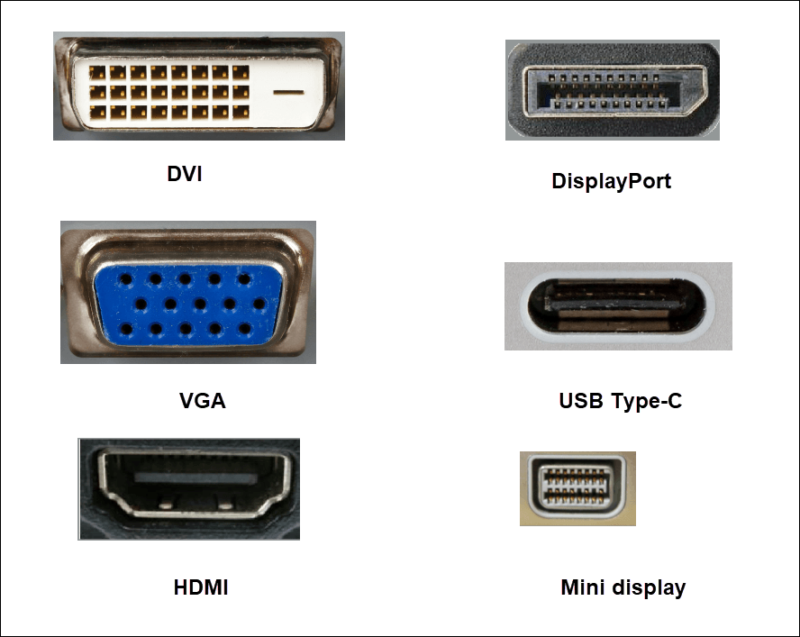
Display type
32 inch monitors are available with LCD, LED, OLED and even QLED displays.
LCD displays
Liquid Crystal Displays or LCDs feature a layer of liquid held between two pieces of polarized glass. The monitor does not produce its own light, instead it is lit by a fluorescent light behind the screen which illuminates the crystals.
- These have a lifespan of about 30,000 hours or eight years of being used at 10 hours a day.
- These usually have a lower price point.
- There is no issue with backlight burn and are good for gamers, since HUD elements can lead to some backlight burn,
- These monitors are slightly thicker and heavier than LEDs.
- There aren’t many 4K LCDs.
- LCDs consume power and run hot.
- The image quality is poorer due to lower contrast and these are not as bright as LEDs.
- At the end of their lifespan, they cause pollution because mercury is included in them.
- These are not good on the eyes, however LCDs with higher refresh rates will not cause any blurriness.
- Genuinely better for gaming as these are not prone to screen burn and can be very fast.
LED displays
Light Emitting Diode, or LED displays also feature a liquid crystal display but these lighting is provided by light emitting diodes rather than fluorescent lighting.
- Have a lifespan of about 50,000 hours or 15 years at about 10 hours of use every day.
- These monitors provide better contrast and image quality for a sharper, crisp image.
- In the long run, LED monitors run cheaper over time as they are more energy efficient.
- These take much less space as they are thinner in design.
- These come with 4K resolutions or fast response times and some monitors provide both.
- These will not cause pollution at the end of their lifespan as they do not include any mercury.
- These are more expensive than their LCD counterparts.
- There is a higher risk for screen burn and image retention.
- These are much better for the eyes when working long hours because these allow black levels and contrast ratios to be easily adjusted to satisfactory levels.
OLED and QLED displays: In Organic LEDs or OLEDs, every pixel in the monitor is its own individual light emitting source. These aren’t backlit as each pixel produces its own light and color. Individual pixels can be turned off to produce deep blacks, thus offering stunning image contrast and quality. The response time for OLED monitors is incredibly fast – around 0.1 milliseconds – which is great for gaming as well.
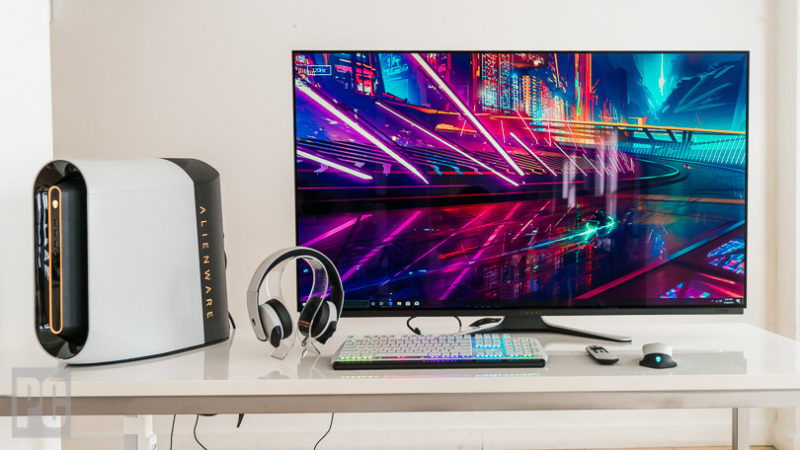
QLED displays use nanoparticles (nanomachines, son!) called quantum dots that are used as colour and light filters. They offer full saturation even in the most brightly lit rooms. The downside is that they have to instead dim their backlights for dark colours, thus they are not capable of producing pure blacks seen in OLEDs. They also are most effectively viewed from dead center and thus are not suitable in setups requiring wide viewing angles.
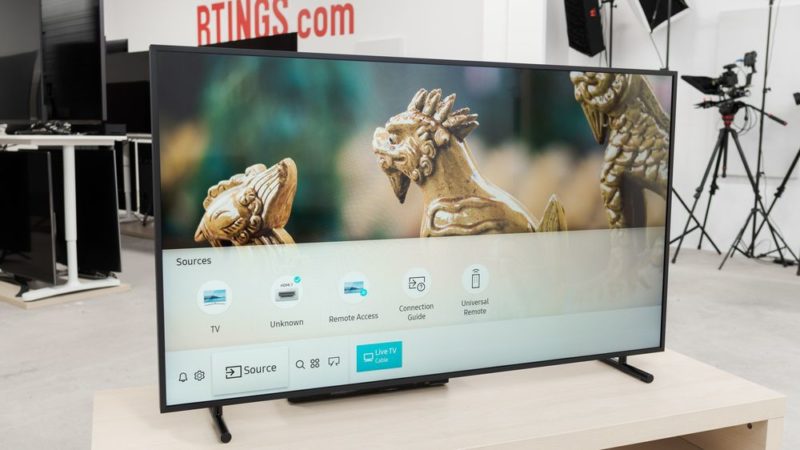
Resolution
The more pixels you get per inch, the better. PPI (pixel per inch) values are helpful in making the choice of the resolution you want. 32 inch monitors may be practically considered as mini-TVs and as such they come in a variety of resolutions. However, most of them come in 2K (2560 x 1440 or QHD) and 4K (3840 x 2160 or UHD).

There are 1080p (HD) monitors available but at this size, but with about 70 pixels per inch, the pixels are very visible. Images will not be as sharp and it will certainly annoy you and cause some unnecessary eyestrain. It really isn’t ideal at this size.
As for 1440p, the PPI is much better at about 93 pixels per inch. If you really nitpick and look, then pixels will be still visible. This resolution is much better suited for 27 inch monitors. But if you keep this monitor at a healthy distance away the image comes out clear and you will not notice any more pixels.
At the much coveted 4K (UHD) resolution, things change. The PPI is about 140 pixels per inch, adding much required breathing room. Images are sharp, crisp and vibrant and no pixel will be visible, even if you try to peep.
4K : PPI = 140 pixels per inch (excellent)
1440p : PPI = 93 pixels per inch (good)
1080p : PPI = 70 pixels per inch (terrible)
(Values were taken for standard resolutions, with a diagonal length of 31.5 inches and then rounded off to their nearest whole number values.)
(Most manufacturers make 31.5 inch monitors)
Aspect ratio
The most common aspect ratios for 32 inch monitors are 16:9 and 16:10. Many softwares today support 16:10 as well.
Refresh rate
The refresh rate of a display is the amount of times per second it is able to draw a new image. It makes a huge difference, for gaming especially. It is measured in Hertz (Hz). If a monitor has a refresh rate of 60Hz, then that means it is refreshing an image 60 times per second.
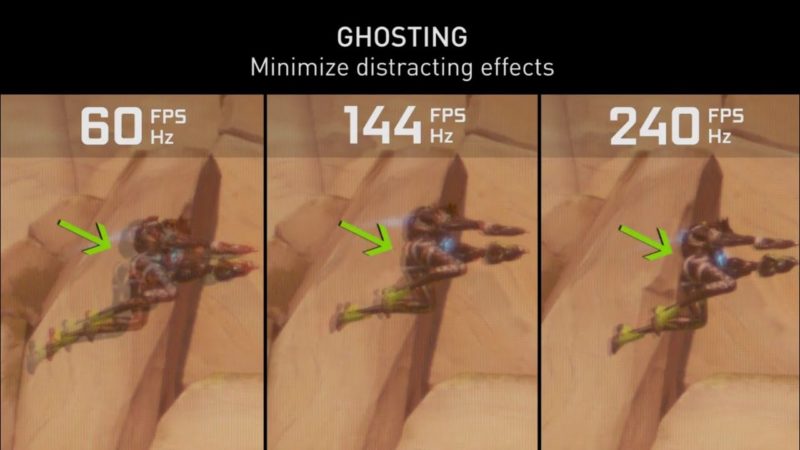
For competitive gamers, high refresh rates are very important. The difference between 60Hz and 144Hz is night and day. However the difference slowly reduces between 144Hz and 240Hz, although it does still give a competitive advantage.
However, higher refresh rates require beefier CPUs and GPUs to drive them, so make sure that you have a PC which can drive them.
Response time
Response time is the time it takes for a monitor to shift from one color to another. Usually this is the duration between going from black to white to black again and is measured in milliseconds (ms).Typical LCDs have response times of about 10 ms although there are many displays with response times as low as 1 ms.
Response time doesn’t usually matter when surfing the web, writing, emailing or even while viewing video. It does matter for gaming however, where every millisecond is the difference between victory and defeat. The lower the response time, the better since it also cuts down on image issues such as blurring or “ghosting”. Response times of about 1 ms to 5 ms are great for gaming.
Response time is also measured in gray-to-gray performance or GtG, a unit of measurement of pixel speed. For gaming monitors especially, it measures how long it takes for one pixel to go from one gray level to the next. However, it is not a standard metric. It is useful in monitor tests.
This is not to be confused with refresh rates. Higher refresh rates are usually better, whereas lower response times are preferred.
Viewing angles
Depending on your setup, you may want to check the viewing angles of the monitor that you are going to buy. Viewing angles are those angles at which the display can be viewed with acceptable visual performance.
The image may seem garbled and of poor quality when viewed outside viewing range. The greater the viewing angle, the better.
Curvature of the display
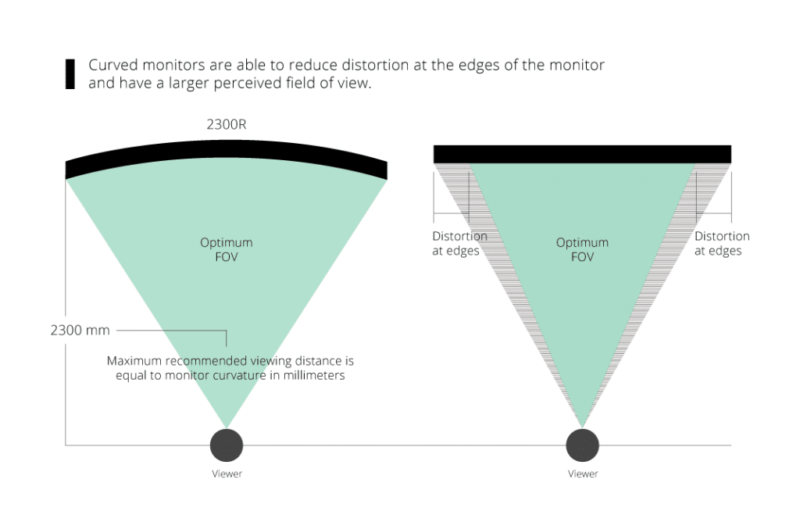
Curved monitors have become all the rage these days. Many companies offer curved monitors, especially in the 32 inch monitor market.
Curved monitors are more immersive, feature less distortion, are comfortable on the eyes and offer a wider field of view as compared to flat monitors. Curvature is usually measured as 1000R or 1500R and so on, where R stands for “radius” and the number stands for the measurement in millimeters. Curved displays also suffer from wall mounting issues and glare.
Color accuracy
Color accuracy is very important to improve the quality of an image and make it more believable. This can be measured against a range of color gamuts, such as sRGB, Adobe-RGB, and also DCI-P3. The closer the monitor is to matching a 100% of those color gamuts, the more color accurate it is.
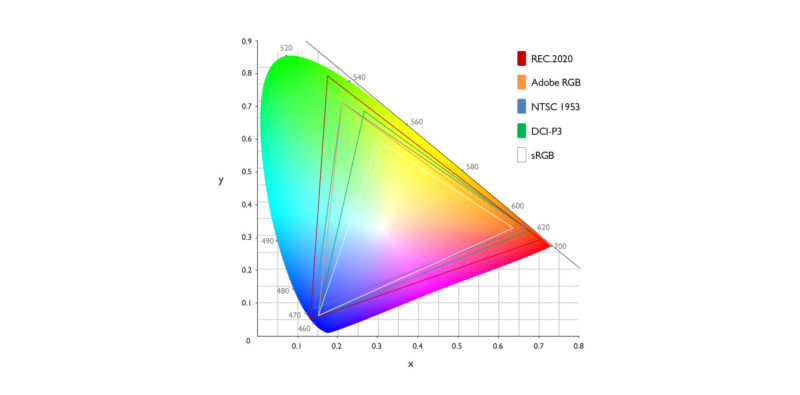
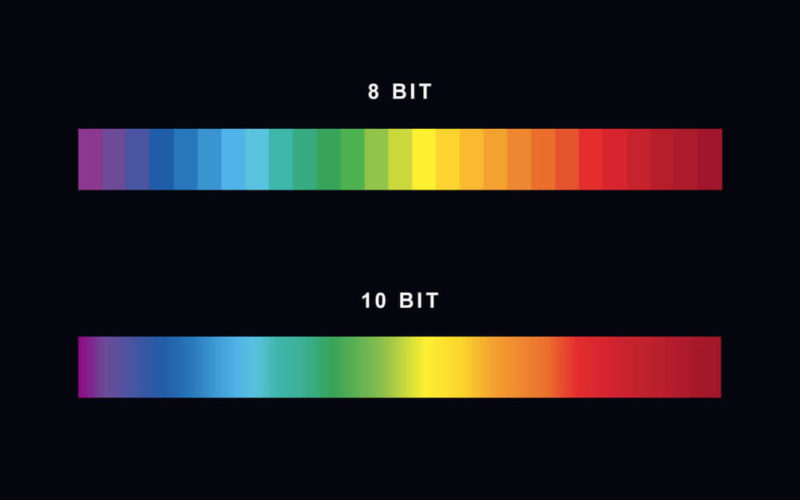
It can be influenced by the type of panel used and also the color depth. The color depth can be 6-bit (262,144 colors), 8-bit (16.70 million colors) and 10-bit (1 billion colors). Color depth indicates how many shades of a particular color a monitor can display.
Avoid using 6-bit at all costs as it is really bad. 8-bit is perfect for most users. For professional artists, photo editors and color calibrators, 10-bit panels are the most suitable, although the pricing goes up as you increase the range.
A lot of monitors will say that they are 10-bit but they are actually 8-bit + A-FRC. They are actually 8-bit but also use a technology called FRC to artificially simulate extra color.
Many 32 inch monitors can reach and even go beyond 100% of the sRGB color gamut.
HDR
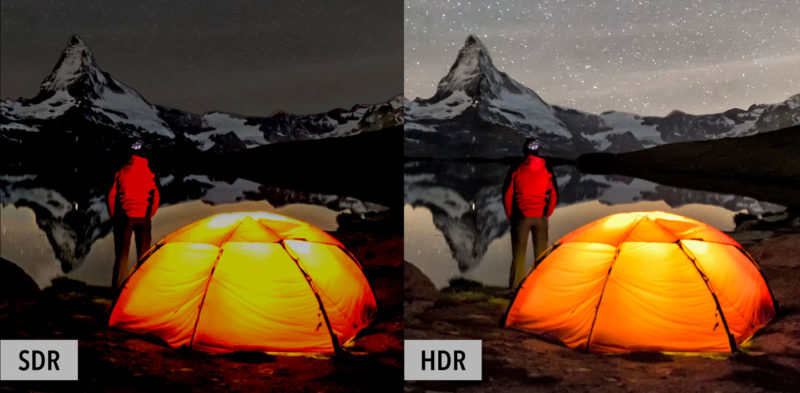
HDR stands for High Dynamic Range and many monitors, especially the newer 32 inch ones, boast that they are HDR enabled.
The HDR enabled monitors have a greater contrast range between the brightest and darkest parts of an image and also a wider colour range. Games and programs that are optimized for HDR look absolutely gorgeous, but not all HDR is the same.
For HDR, an important thing to consider is the brightness of the monitor which is measured in nits. The greater the brightness, the better.
The DisplayHDR standard lists three substandards: the HDR 400 which gives 400 nits of brightness and is considered the baseline for HDR, then the HDR 600 and for the ultra premium there is the HDR 1000. However, some labels say HDR 10. This refers to the 10 bit colour depth if the monitor is capable of it. The brightness varies however, and many say that true HDR is only at about 1000 nits of brightness.
VA panels and quantum dot technologies feature the best HDR and HDR is generally suited to creators and artists. Games however, also benefit from this and can look much better.
Panel Type (TN, VS, IPS Panels)
32 inch monitors are available in TN, VS and IPS varieties in the LCD technologies also.
TN panels
TN stands for “twisted nematic” and is the oldest standard among panel technologies. These panels make use of the twisted nematic effect. It is basically used to change the alignment of the liquid crystals in the display when a net voltage is applied across it.
When there is no voltage, the liquid crystal molecules are rotated by 90 degrees and the crystals are turned “off”. This in combination with the polarization layers allows light to pass through. When a voltage is applied, these crystals are untwisted and this alignment of the liquid crystal molecules blocks light and displays the image.
How do they stack up in performance? TN panels are generally the fastest and have the highest refresh rates. However, they have the worst viewing angles, colour performance and low contrast ratios. These panels are used in budget class displays and super-fast gaming displays for both desktops and laptops. In recent times, these panels can even go up to 360Hz.
VA panels
VA stands for “vertical alignment”. This makes use of vertically aligned crystals which tilt when a voltage is applied and subsequently light passes through. This difference is key between IPS and VA panels: IPS panels have parallel alignment whereas VA panels have vertical alignment. There are several VA variants, for example AU optronics AMVA and Samsung’s SVA.
VA panels are often the slowest of all the panel technologies. However, they have the best black levels and contrast ratios by far. The colour performance is middle of the ground compared to IPS but is certainly much better than TN.
In recent years, high end gaming VA monitors have had 8ms to 10ms response times with some even reaching 1 ms response times so the technology is definitely improving.
Televisions make extensive use of VA and the contrast ratios are higher. If you want deep blacks and high contrast ratios, VA is the choice for you.
IPS panels
IPS stands for in-plane switching and these panels are the most coveted among all three. The liquid crystals are parallel to the glass substrates and when a voltage is applied it changes their alignment as in the other two types. These crystals don’t twist to let light through; rather they “rotate” which enables them to have a whole slew of benefits.
LG simply calls their variant of this technology IPS, whereas Samsung calls their variant PLS or plane-to switching and AU Optronics calls their variant AHVA or advanced hyper viewing angle, which can be easily confused with VA.
IPS monitors are the best of the three in colour performance and viewing angles. Due to this high tier color output and almost universal 100% minimum color accuracy, these monitors are the best choices for creators and professionals.
They used to boast mid-tier response times and refresh rates, along with mid-tier black levels and contrast ratios. But this has changed in recent times, with companies such as LG, Asus and Samsung offering IPS panels that have fast 1ms response times and 144 Hz and even 240Hz refresh rates.
IPS monitors may suffer from a phenomenon called “IPS glow”. It is an apparent white glow when viewing dark images at angles. Most newer monitors however do not suffer from this.
Most 32 inch monitors come in IPS and VA varieties, with gaming focused ones featuring ultra low response times and bigger refresh rates. VA panels will fit most buyers’ needs and IPS panels will fit the needs of creators, but these lines are not so black and white and you can have ultra fast IPS panels with 1 ms response time and 144Hz/ 165Hz refresh rates or a VA panel with 8-10 ms and 144Hz or above.
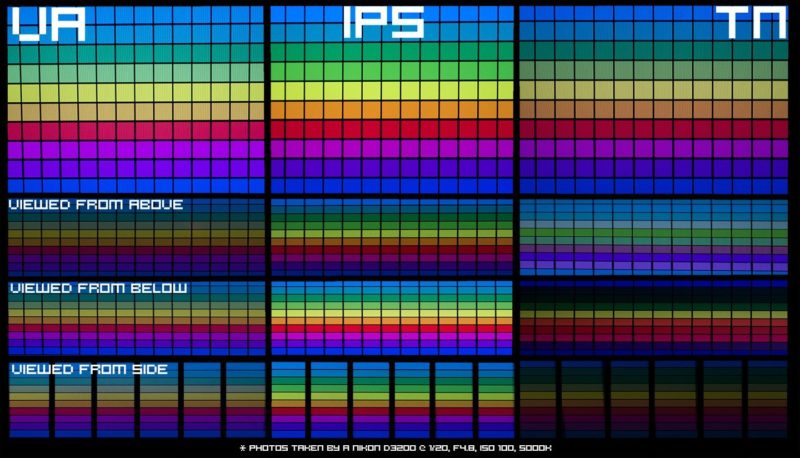
G-Sync vs FreeSync
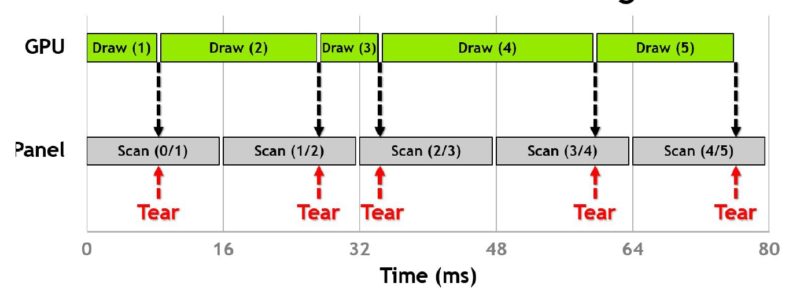
These two features are based on Adaptive Sync technology. Adaptive Sync synchronizes the monitor’s refresh cycle with the rate at which your PC’s connected graphic card renders each frame, even if that rate is variable. By fixing the refresh rate of a monitor, it’s possible for it to draw a new frame before the current one has finished rendering.
This can be fixed if the monitor draws every frame completely before the video card sends the next one, thus preventing screen tearing and artifacts.
Nvidia and AMD have come up with their own proprietary technologies based on Adaptive Sync called G-Sync and FreeSync respectively, with the former being the first to come out into the market.
G-Sync monitors require proprietary hardware to function and thus they carry a slight price premium. FreeSync meanwhile uses the Adaptive Sync standard built into the DisplayPort 1.2 specification, thus making them more accessible.
G-Sync monitors lock the frame rate to their upper limit when connected with a graphics card that outputs more frames than they can handle. However, FreeSync has no such limits. This introduces screen tearing but the input lag is reduced further in these monitors.
Both G-Sync and FreeSync monitors are great for reducing input lag and both provide a better HDR experience and FreeSync monitors come in premium and pro versions. Best of all, FreeSync monitors support Nvidia graphics cards as well.
Many 32 inch monitors support FreeSync and there are quite a few that also support G-Sync.
Backlight strobing
Backlight strobing lowers pixel resistance times to the eyes, that is, it changes how long a pixel is visible to the eye each frame. Lowering the time during which a frame is visible during a frame reduces motion blur. The shorter (faster) a pixel persistence time is, the less motion blur there is on the monitor.
This serves as a good test to see how fast your monitor is and how fast the response times are. This is a qualitative aspect and does not directly correlate to the response time stated by the monitor manufacturer.
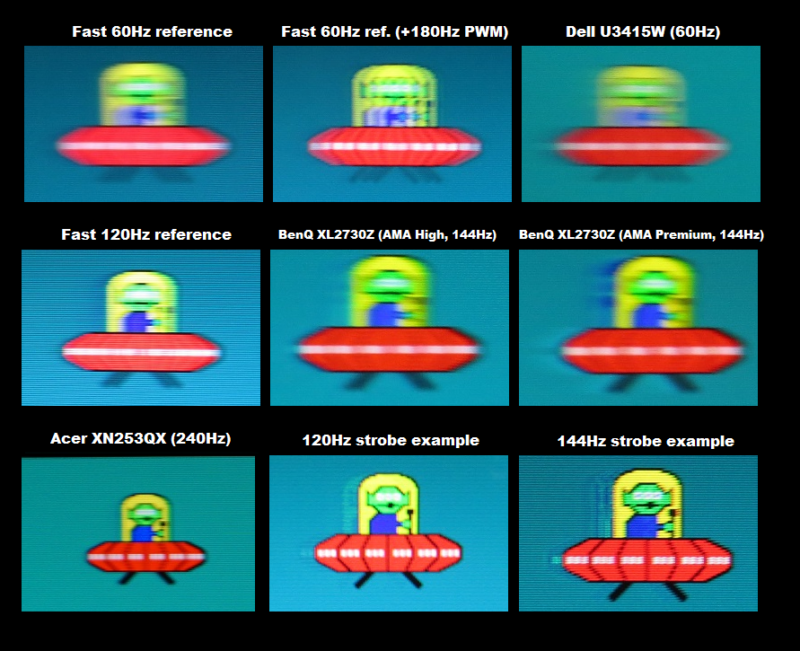
Now that we have seen all the features that are available to 32 inch monitors, it’s time to get down to the nitty-gritty and see what the best monitors currently available on the market are, and some more that are coming on the horizon.
The Best 32 inch Gaming Monitors
1. ASUS ROG Swift PG329Q
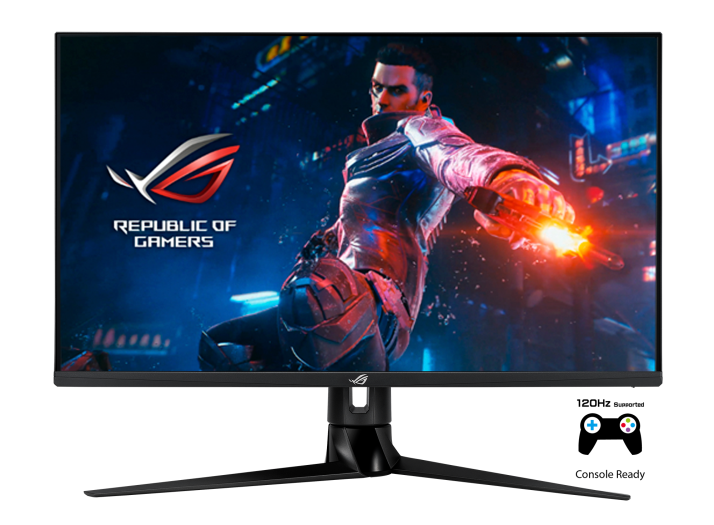
ASUS has given us a strong heavy-hitter which can go toe-t0-toe with the others when it comes to its beast of a 32 inch flat panel, the PG329Q. This display packs high end specifications for this class, featuring a 32 inch screen with a 2560 by 1440p resolution, a 175Hz maximum refresh rate, a fast IPS panel provided by AUOptronics with 1 ms response time and a huge color gamut that is listed at 160% sRGB all in a 16:9 aspect ratio.
The fine folks at ASUS has included more fun stuff such as ELMB-Sync (a proprietary solution), Adaptive Sync that works with old GPUs even though it is a G-Sync monitor and a Display HDR-600 certification.
Design wise it has gamer-y aesthetics lining the back with an RGB ASUS ROG Swift symbol lighting, but in the front the display is pretty clean and respectable. Some people like it, some don’t. It has a hook on the back for cable management.
It has a good gray-to-gray performance for an IPS of this size and is even faster than most of the Nano IPS monitors made by LG. The response time sits right besides fast 2K 27 inch gaming monitors, but if you are a competitive gamer and frames are absolutely essential for you, then you can certainly look at other options. It is also one of the lowest input lag times in its class.
The ASUS PG329Q includes ELMB-Sync which is ASUS’ proprietary technology which allows you to use backlight strobing and Adaptive Sync at the same time. The feature works really well up to some certain limits and is perfectly usable between 144Hz and 175Hz.
The color performance is spectacular too. It has 95% DCIP-3 coverage, a 100% of Adobe RGB and a 160% of sRGB coverage, which is very good for color accurate work and creators will find this monitor to be very good. However, the contrast ratio is not so good as the 27 inch variant of this panel. This monitor features HDR-600 which sounds great on paper, but produces a minimal effect when used. It’s certainly noticeable, but it’s not that great. However this is almost nitpicking at this point
For all this power the monitor does draw nearly 40 watts of power but there are settings included to make it more power efficient. It is priced around $700-$800 depending on region, availability and sales. Overall, this monitor is a great option in the 32 inch market for gamers and content creators alike, although the serious ones might want to consider a 4K resolution instead of 2K. You will not go wrong with this monitor.
Get it here:
2. The Samsung Odyssey G7
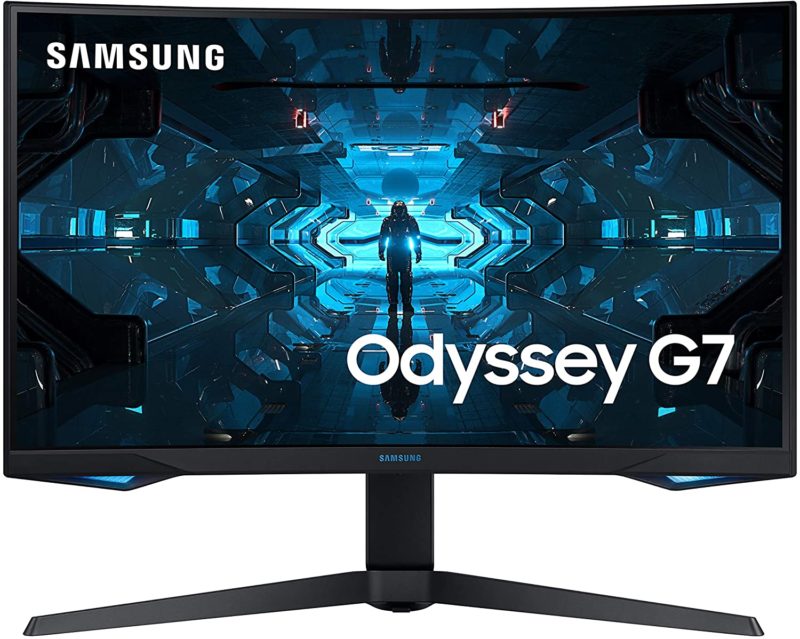
Samsung has quite literally reinvented the wheel this time. The amount of mind-bogglingly crazy features this 2560 by 1440p 32 inch gaming monitor with a retail price of $800 offers is absolutely crazy. It is a VA panel with a 1 ms response time, a never before seen 240Hz refresh rate with a 1000R curve, the only one in its class. This monitor is all about taking things to the extremes, with Samsung having certified it capable of Display HDR-600 functionalities.
The monitor has some gamer aesthetics on the back like parallely arranged lines racing across a wide circle which is lit with RGB lights and on the front, in the bottom a bezel that tapers off at either ends. The display modes can be changed by using the navigation panel and the user interface is easy to use.
However, the monitor is bulky and weighs a bit more than the other ones. The stand is V-shaped and you can place objects in front of it, but the monitor has a much larger profile due to this. The stand is sturdy and has a headphone hook and the monitor can be VESA mounted too.
This gem is crazy fast with the best gray-to-gray performance among all monitors currently available in the market, the lowest input lag among the other monitors and the only one capable of 240Hz refresh rates. This is absolutely great for competitive gamers. Best of all, it has G-Sync and FreeSync Premium Pro.
The colour panel is truly 10-bit however the contrast ratio is about 2500:1. It covers about 91% of the DCP-I3 and 85.5% of Adobe RGB colour spaces, making it highly accurate when it comes to colours.
It has a 1000R curve which to some folk on paper seems rather too jarring at this size but to many others seems perfectly fine and reportedly it reduces eye strain on the monitor as well. It really is up to personal preferences.
The Samsung Odyssey G7 has two DisplayPort 1.4 ports and one HDMI 2.0 port with a 3.5 mm headphone jack, oddly. There are no speakers in this monitor and this is the only problem that people have, but honestly, actual speakers are always much better than monitor speakers. The Odyssey G7 is also power heavy and it consumes about 50 watts, but at the premium price of $800, this is all you could ever want in a 32 inch monitor.
Get it here:
3. The LG 32GK850-B
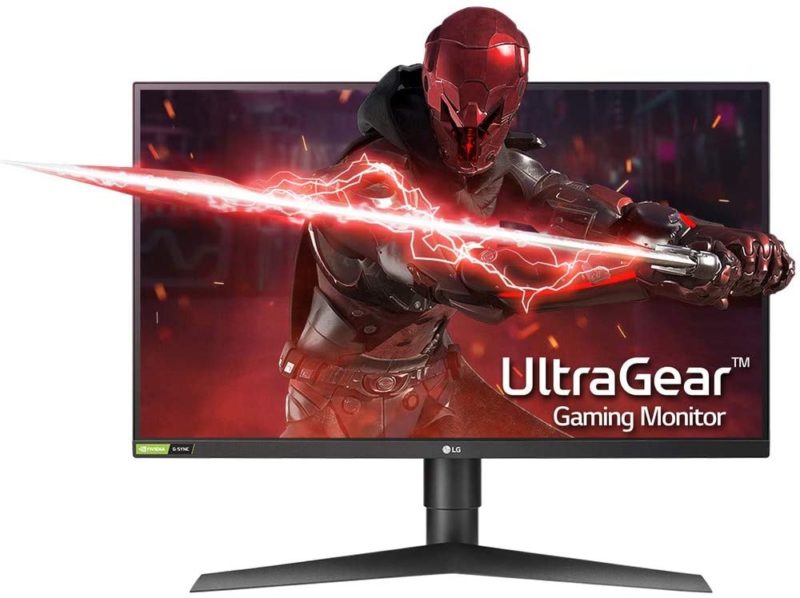
LG were late to the 32 inch monitor game but they have some strong, modest showings with the LG 32GK850-B and the LG32GK650, it’s little sibling. But we are focusing on the big brother and it certainly does tick all the bells and whistles you’d expect it to have. It is a 32 inch QHD display and a VA panel which is flat and has a 5 ms response time and a 144Hz refresh rate.
The build quality of this monitor is decent. It is made of plastic but the entire construction feels sturdy and robust. However, there is a gap between the edge of the screen and where the active pixels are. This might annoy you in a multiple monitor setup. It can pivot and swivel too if you need the portrait alignment.
The stand looks elegant and supports the monitor well but there’s a wobble to it. It has a hook on it for cable management. The back has a circle that lights up even when the monitor is off and it accentuates a gamer aesthetic.
The response time of 1 ms gray-gray performance on this monitor may fool you at first glance, but it is outstanding. The “fast” mode is perfect for both gaming and creativity and paired with 144Hz this monitor provides a smooth experience, although there might be some overshoot. It is G-Sync enabled and the input lag remains low even with it disabled.
The contrast ratio of this monitor is good as expected from a VA panel. Black looks deep in a dark room. It has great SDR peak brightness of about 350 nits, and is bright enough to reduce glare in most rooms. It however does not support HDR. The colour accuracy before calibrating the monitor is absolutely mediocre and hence it is advised to calibrate it. Post-calibration colour accuracy is excellent, being about 76.6^ of the Adobe RGB gamut. This monitor however has some bad viewing angles and it is recommended to keep this directly in front of your eyes for good vision.
It has one DisplayPort 1.2 and one HDMI 1.4 with no audio jacks or in-built speakers. The power supply is an external brick and it isn’t so power efficient, consuming about 55 watts when it’s on and 0.5 watts when it’s turned off. It retails for about $700-$800 and is overall a good and modest monitor in this price range.
Get it here:
4. The Gigabyte G32QC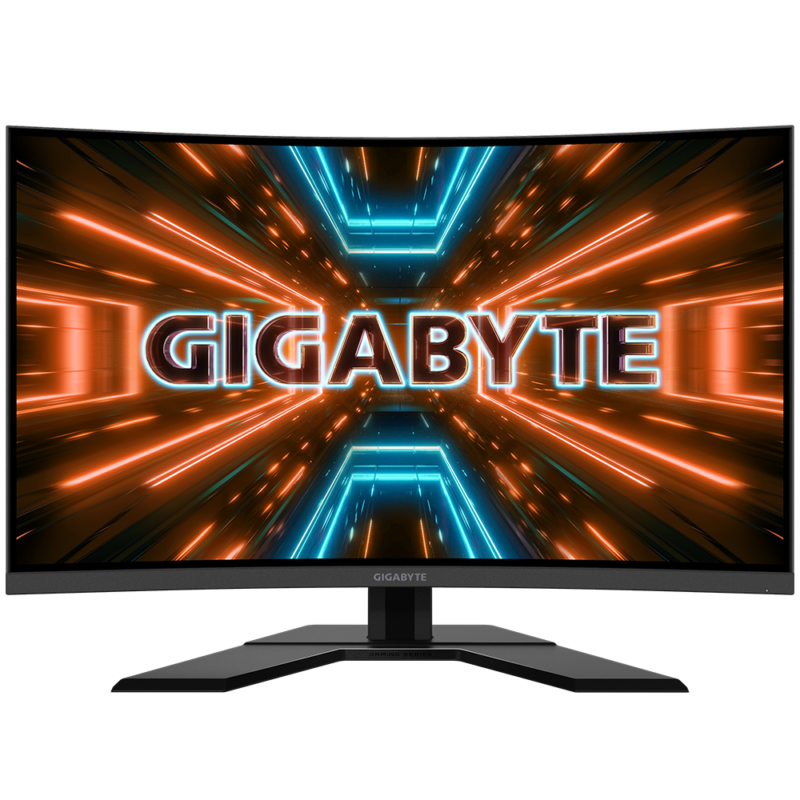
The Gigabyte G32QC is a 32 inch monitor with a 1440p resolution, a 1500R curvature and it boasts a refresh rate of 165Hz and HDR support. At around $360, this monitor is a serious contender for those looking to maximize price-to-performance ratio and can easily compete with the other monitors.
It has a simple design that doesn’t stand out. The screen is curved and the bezels are very thin, except for the bottom one that is a bit thicker. The V-shaped is sturdy and supports the monitor well and there is very little wobble.
However, the monitor lacks swivel adjustments and can’t rotate to portrait mode. It’s back is made out of plastic and there is not much to it. The monitor takes a notable amount of space due to its curvature. Overall the build quality is solid.
It has a great response time of 1 ms and the refresh rate of 165Hz makes the experience buttery smooth, provided you have the hardware to run games at those frames. It comes with FreeSync Premium Pro and is also G-Sync compatible.
The G32QC is a VA panel and a contrast ratio of 3000:1 is advertised, but upon actual testing it is found to be 5000:1 which is excellent. The native color gamut is DCPI-3 and unlike the other monitors it also features an sRGB mode. It can get as bright around 450 nits and you can certainly enable the HDR mode but at this brightness it’s not that great.
However, the black uniformity is bad which may result in bleeding on the screen and the panel also suffers from sub-par viewing angles.
There is a single joystick located on the right-back side with which you can navigate the on-screen menu. It comes with one DisplayPort 1.2 port, two HDMI 2.0 ports, two USB 3.0 ports and one 3.5 mm audio jack. It consumes about 30.5 watts of power at 200 nits of brightness. This monitor is excellent for its price. Another good alternative that is very similar to this one is the Asus TUF Gaming VG32VQ, however it is priced a bit more.
Get the Gigabyte G32QC here:
Get the ASUS TUF Gaming VG32VQ here:
5. The MSI Optix MAG322CQR
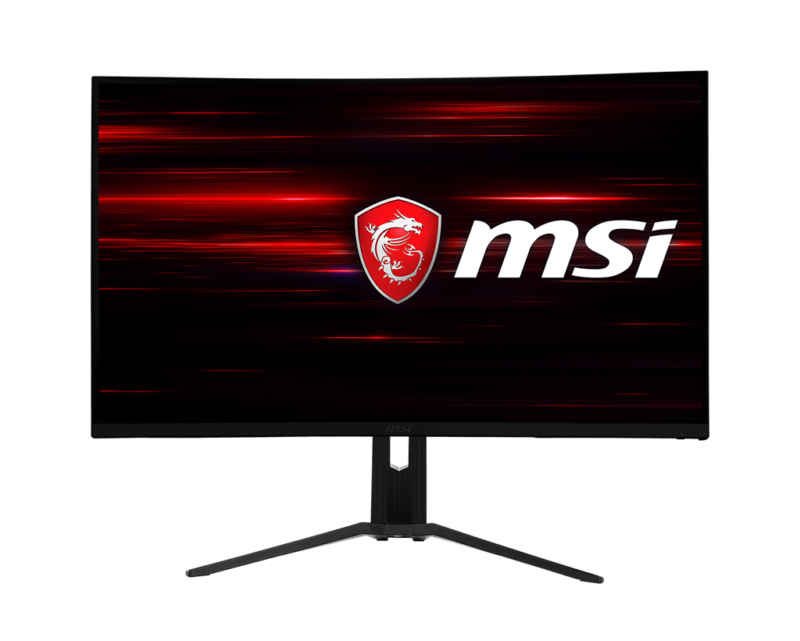
The MSI Optix MAG322CQR is a great choice if you want an immersive 16:9 screen at 1440p resolution without breaking the bank. It features an ultra-fast LED backlit VA panel that also has great colour accuracy.
The design is minimal and the back is made of plastic. The stand is sturdy and supports the monitor well. However, it does not have pivot or swivel ergonomics and the tilt is minimal, ranging between -5 degrees to +20 degrees. The VESA mount will be of the 100x100mm standard. The stand does leave some space but the monitor is quite big and will take up some space on your desk.
This monitor has a refresh rate of about 165Hz and 1 ms response time and it comes with FreeSync Premium. It also has a 1500R curvature which accentuates the experience rather well. However, it still has some backlight bleed and ghosting issues which can be sorted by calibrating in the on-screen menu but the menu itself is terrible and requires some gymnastics to get around.
The MAG322CQR is surprisingly color accurate, with the panel covering around 125% sRGB and 96% DCI-P3 color gamuts. The contrast ratio is also the standard 3000:1 considering it’s a VA panel. The viewing angles are mediocre and color shifting is barely visible.
The ports included on the back are one DisplayPort 1.4, two HDMI 2.0s, one USB Type-C, two USB 2.0 Type-As and one standard audio jack. At max brightness, it consumes about 46.8 watts of power. At the price of $400, this is a good monitor if you want to focus on its good points and ignore the weak points.
Get it here:
The Best 32 inch monitors for Content Creation/ Everyday Use
1. The LG 32UD99-W
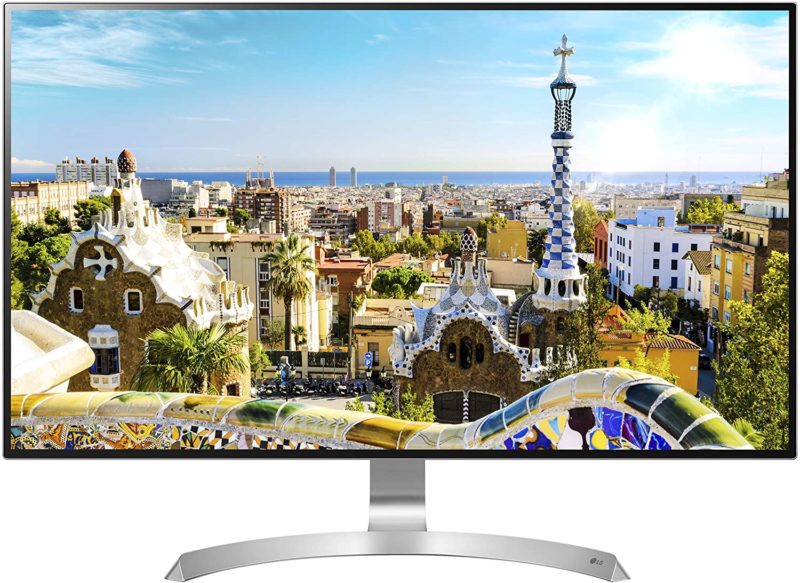
The LG 32UD99-W is a good IPS monitor with an excellent 4K resolution, wide viewing angles and an excellent low input lag with great color accuracy that makes it good for creators.
It has a sleek and clean design with an all white back which makes it suitable for office environments. The stand is large and prevents you from placing things directly in front of the monitor. It also wobbles significantly when pressure is applied on the desk. The ergonomics are decent, allowing you to adjust the height and tilt and pivot it to portrait mode and back. The build quality is also decent and feels good.
The monitor has a 60Hz refresh rate and a response time of about 15 ms, so images appear smooth and there is no noticeable frame skipping. The monitor also features FreeSync Premium.
The brightness of this monitor is excellent at about 350 nits but the HDR is mediocre. The color accuracy out of the box is okay-ish, but it can be calibrated to give excellent results, covering about 88% of the Adobe RGB color gamut. However, there is some backlight bleed along the edges of the monitor that according to some users can get noticeably larger over time.
For ports it has a DisplayPort 1.2, two HDMI 2.0s, two USB 3.0s and one standard audio jack. It consumes about 49 watts of power. Overall this monitor is perfect for content creation and also everyday and mixed usage such as media consumption and gaming.
Get it here:
2. The BenQ EW3270U
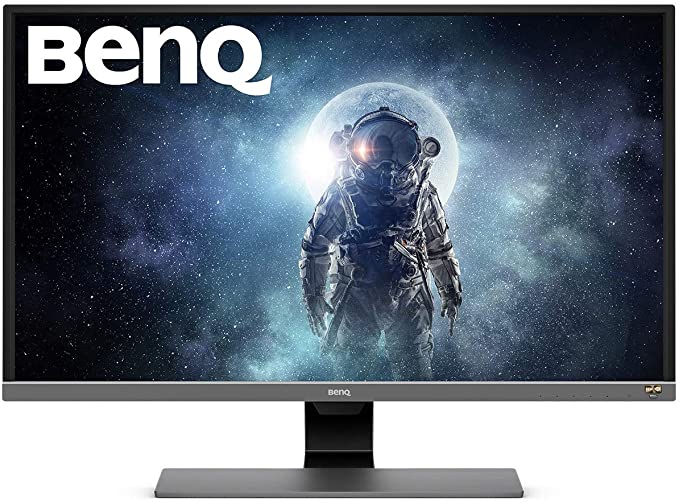
The BenQ EW3270U is a good VA monitor with decent color accuracy and good picture quality. It has a resolution of 4K and is good for those who want to use the monitor in a dark setting or room.
It is a simple and professional looking monitor that fits well in any office setting. The stand has sharp angles and it doesn’t take up much space, giving it a modern and sleek look. Besides, it is also sturdy and supports the monitor well with only a little bit of wobble. The build quality from front to back is plastic and the ergonomics are pretty bad as it only features tilt adjustments and the range for tilt is also pretty narrow.
This monitor has a refresh rate of 60Hz, a response time of about 15 ms and very low input lag times. It comes with FreeSync Premium and is also G-Sync compatible.
The monitor has good color accuracy and excellent contrast ratios which produces deep blacks. Viewing angles are a bit narrower but they’re aren’t so bad such that they completely ruin the viewing experience. It has a good HDR color gamut which covers about 69.4% of the DCI-P3 color space and it has a max brightness of 270 nits. This monitor is perfect for usage in dark rooms and environments.
For ports it has one DisplayPort 1.4, two HDMI 2.0s, one USB Type-C port and one standard audio jack. It uses 44 watts in standard mode and 24 watts in it’s eco mode, which makes it good for dark room and low power performance.
Get it here:
3. The Samsung LU32J592UQUXEN
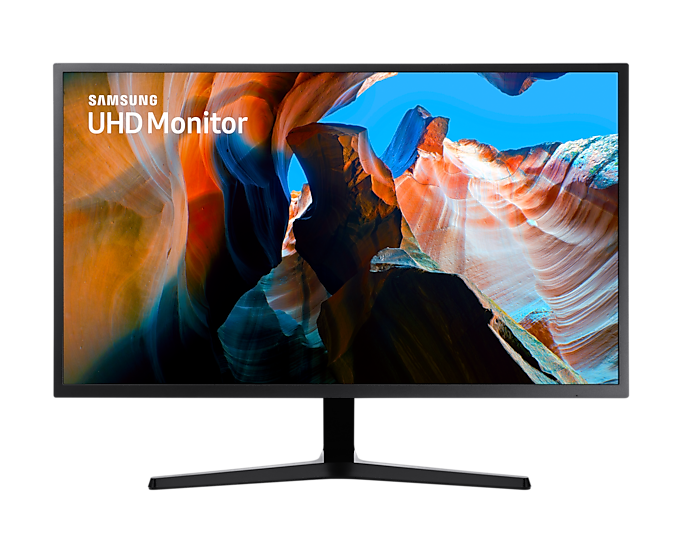
Although the name may be complex and confusing, this monitor is rather the opposite; it has a simple design and offers fantastic value for its price. This is a sub-$400 dollar 4K monitor that really should cost more.
The build is simple and there is nothing unique about it, yet the quality of the monitor seems cheap. The stand is a bit wobbly but overall supports the monitor well, but it does not provide much space in front of it. But at this price you should be okay with it and the other features are simply too good. This is just one con among the many pros.
This monitor has a refresh rate of 60Hz and has an excellent, imperceptible low lag input of 10 ms. However, the response time is not as good and this is certainly noticeable in games. But Samsung has also included AMD FreeSync, so screen tearing is not much of a problem.
Equipped with a VA panel, this monitor does offer a better contrast ratio in comparison to the other TN and IPS panels. Samsung also advertises this monitor as “QLED”, but this monitor covers only 99% of the sRGB colour space. Regardless, it provides an excellent quality for its price due to the 4K resolution, a decent 270 nit brightness and 10-bit color support. It also has excellent upscaling quality and boasts a viewing angle of about 178 degrees both vertically and horizontally.
At the back of the monitor, there are one HDMI 1.4 (max 30Hz at 4K), one HDMI 2.0 (60Hz 4K, one DisplayPort 1.2 (60Hz 4K) and a standard headphone jack. It consumes about 47 watts of power and at a price of $400 is an absolute steal among other 32 inch monitors.
Get it here:
4. The Dell UltraSharp U3219Q
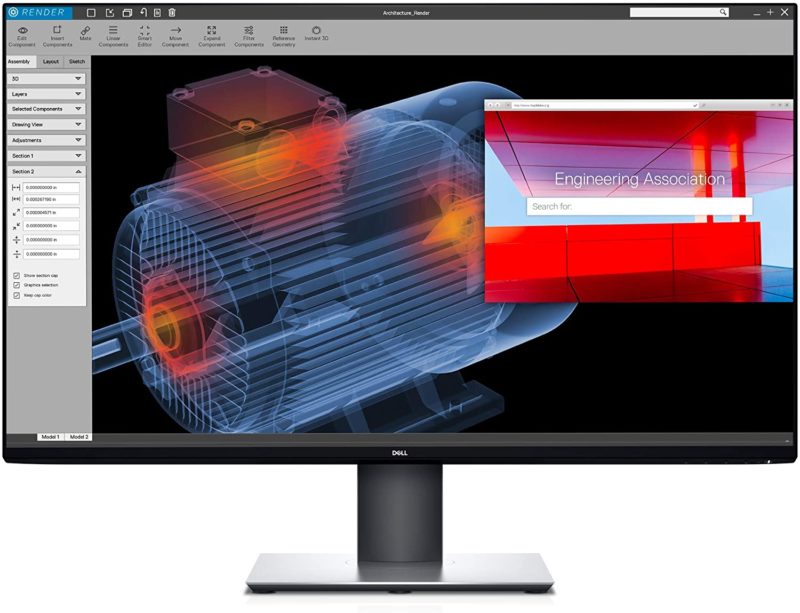
Dell has created a professional monitor for creative designers, video editors and even photographers with the Dell UltraSharp UP3216Q, having a resolution of 4K with IPS technology.
This monitor is durable and long-lasting because it is made with premium, PVC- free materials. The stand is sturdy and supports the monitor well and also provides some much needed flexibility when adjusting your setup. The arsenic-free glass and mercury-free LED panel, coupled with a frame made from 25% recycled plastic makes the monitor eco-friendly as well.
The UltraSharp has a 75Hz refresh rate with a 6 ms response time, with an image contrast ratio of 1000:1 so things flow smoothly on this monitor. It is also G-Sync enabled so there will be no screen tearing or ghosting.
It has absolutely phenomenal color quality and image clarity, and boasts 99.5% Adobe RGB, 100% sRGB and 87% DCI-P3 coverage. The panel is also 10-bit and it is perfect for going into the most minute details in images. It can deliver decent HDR and it is suitable for extreme color accurate work.
The ports offered are one DisplayPort 1.4, one HDMI 2.0, four USB 3.0s, one USB Type-C and the standard 3.5 mm audio jack. It uses about 43 watts of power while operating in the standard preset mode and there is no ECO mode like other monitors in its price range. This monitor is excellent for content creation and consumption alike.
Get it here:
5. The Dell S3221QS
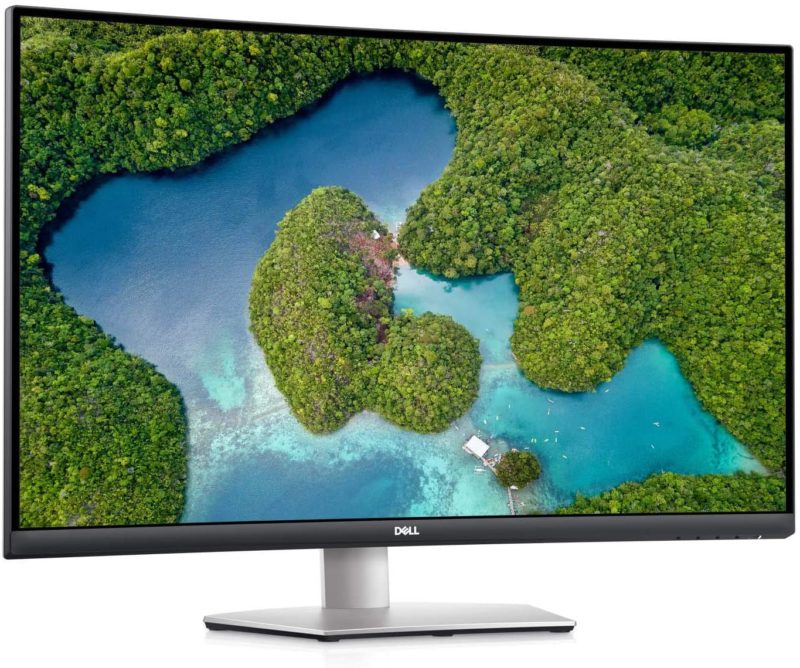
The Dell S3221QS is a good monitor that is suited to a variety of uses, from content creation and everyday work to media consumption and gaming. It is a curved 4K monitor and it gives you the ability to stack multiple windows side by side and also makes gaming more immersive.
Design wise it is simple and fits in most office settings. It has three thin side and top bezels with the bottom bezel being slightly thicker. The stand supports the monitor well with there being almost no wobble. It doesn’t take up much desk space either. Unfortunately, this monitor has poor ergonomics as it lacks swizel and portrait adjustments and has a minimal tilt range.
This monitor has a decent response time of 6 ms at its max refresh rate of 60Hz. However, there is visible motion smearing behind fast moving objects. To counteract this the monitor comes with AMD FreeSync so screen tearing and ghosting pose barely any problems.
The brightness on the monitor for both SDR and HDR is consistent with it reaching to about 400 nits of peak brightness with HDR enabled. It covers about 80.3% of the Adobe RGB color gamut, but the black uniformity and viewing angles are pretty mediocre compared to other monitors. Color performance and image quality are overall accurate and good enough for content creation and media consumption.
For ports it has one DisplayPort 1.2, two HDMI 2.0s, two USB 3.0s and one 3.5 mm standard audio jack. It has a power consumption of about 38 watts which is pretty good considering the other 32 inch monitors in the market. Overall this monitor is a solid choice and fantastic in dark rooms and low light situations.
Get it here:
6. The Apple Pro Display XDR
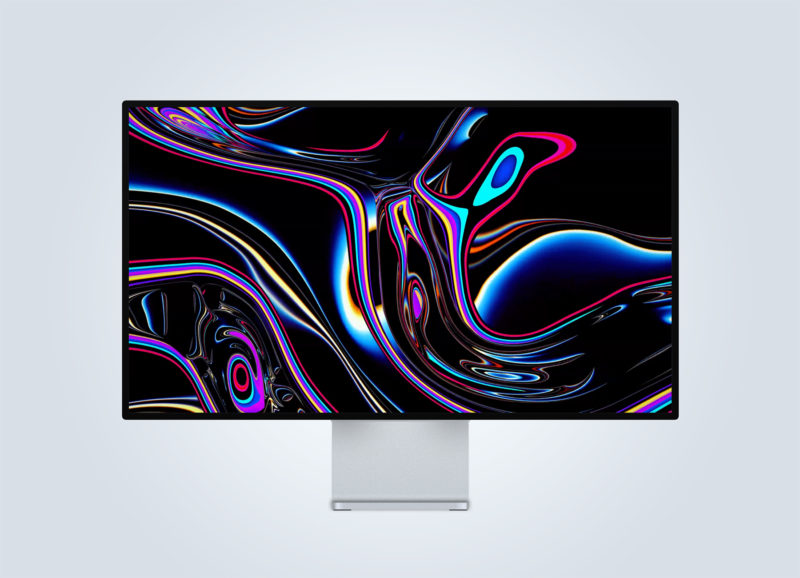
For the Mac fans, we’ve got you covered. Apple’s answer to the 32 inch market is the Apple Pro Display XDR, which features a 6,016 by 3,384 resolution, casually also known as 6K. Being an Apple product, it starts at $4,999.
The chassis of the monitor on the back has “cheese grater” type holes punched on it, both for aesthetic purposes and cooling all the internals of the monitor. The monitor is cooled passively, thus eliminating the presence of noisy fans. This is the first time any designer has thought to use the passive-cooling apparatus as the actual chassis for the monitor itself as well as for aesthetic purposes. The build quality is quite sturdy and you will never worry about damaging it.
It does come with an optional sturdy metal stand that does not take up much space on the desk and is wobble free. The articulating motion of the stand is like running your hands across smooth velvet. The stand also looks nice, clean and minimal. The only caveat is that it costs $999, an insane price for a stand, but that’s the Apple tax you would pay for this gorgeous monitor.
The MSRP including both the basic version and the stand is now $5,999.
Forget about refresh rates and response times; this monitor is all about reaching the heights of creativity and productivity. The display backlight on the Pro Display XDR utilizes a feature known as “full-array local dimming”, or FALD for short. This varies from traditional LED backlit-displays in that the traditional ones brighten and dim a whole scene in a panel through “global dimming’, which means that the whole panel brightens or darkens according to the brightness of the scene.
FALD allows each part of the scene to be brightened or dimmed independently, allowing for much greater contrast and visual quality. FALD displays are sort of a middle ground between OLED and microLED technologies.
However, the physical screen on the Apple Pro Display XDR is reflective, which may be of great concern. Reflective glass bounces light in well-lit home and office environments back at you, thus obscuring your view and making it difficult to see. The monitor doesn’t even come with shrouds that keep out excess light.
But, for an additional thousand dollars, Apple will provide you with what they call a nano-textured glass, which is basically a matte screen and removes all reflectivity.
The MSRP is now $6,999.
Apple has stated that this monitor was made to compete for space with the big ones such as the Sony BVM-H3X10, a 31 inch monitor that retails for $43,000 because it is tailor made for use by major movie studios, big production houses and game developers. Certainly this feels much cheaper, and boy, does this monitor pack a punch.
In terms of color coverage, this monitor does not fare well in the sRGB color space. Many monitors cover up to a 100 percent or close here, but the Pro Display XDR covers only 94% here. This is good enough for most users. It excels in the coverage of the Adobe RGB color space, covering around 96.7 percent but the Dell U3219Q still has a greater coverage as shown earlier. For the DCP-I3 color gamut, it falls just shy of the advertised 99 percent coverage, with the real coverage being at 98.7 percent.
This monitor has excellent brightness and contrast ratio. With Display HDR turned on, it has a full peak brightness of 1,560.9 nits, which again just falls shy of the 1,600 nit rating that Apple gave it out of the box. The black levels are insanely low for this monitor; at the lowest SDR brightness of 499 nits, the contrast ratio of the monitor is still a mind-boggling 12,460:1, which jumps all the way up to 39,037:1 when the brightness is at the maximum level of 1,560.9 nits.
Apple has calibrated this monitor to be color accurate right out of the factory and most users will not need to calibrate it. However, there is actually no way to calibrate this monitor to your exact specifications which is a big no-no.
A majority of media content nowadays can be stretched to 4K. The only way to view 4K content is through the Apple TV+ app and it is available in both HDR and Dolby Vision. But you are limited by the 4K resolution on this 6K monitor, and only the content that Apple produces. However, these shows and movies and content in general look stupendously good and there is really no match for this among other monitors.
The 6K resolution is perfect for 4K content creators who like to have their palettes, toolbars and timelines available on the screen all at once along with full resolution content. This is of major benefit to production houses and game developers and removes the need to zoom in on their project to keep their tools at reach.
The Apple Pro Display XDR seemlessly integrates with the Mac OS X Catalina’s software to provide the best experience. When you look through the grates on the back, the internals are intricately designed and overall the inner workings are very sophisticated. It is truly an engineering marvel to consider and certainly a conversation piece in the office or when among your peers.
However, the price for the full package is something that is substantial. Leave the base price of $4,999 alone. The $999 stand is the butt of memes and jokes on the internet and there are certainly better stands that cost less. They also could have kept the matte panels by default’ it feels like they are making you pay extra just for something that could have come installed by default. The price for solo creators is absolutely not worth it.
For ports, this monitor is equipped with two Thunderbolt 3 ports, one DisplayPort, three HDMI ports and a built-in USB hub. Overall, if you want it fully decked out with the stand and the matte panel, it will cost you $6,999. But this is worth it considering the other displays in its class that it is competing with; this monitor is tailor made for business purposes and corporate media production and you would be much better off considering the other options if you want a 32 inch monitor for home use. With stunning colors and a great design, this monitor is excellent for it’s price.
It is available on Apple’s website.
New and Upcoming 32 inch monitors in 2021
Until now we have seen that the current monitors on the market for gaming have 2K resolutions and higher refresh rates, and the ones for everyday use and creators have 4K screens with lower refresh rates but much better colour accuracy. What happens if you blend the best of both worlds?
You get the next generation of 32 inch monitors, some of which are slated for release this year itself. Here are some upcoming 32 inch monitors to keep an eye out for:
ASUS revealed its flagship 32 inch monitor, the ASUS ROG Swift PG32UQX at CES 2020 back in January. However, the current pandemic significantly delayed the monitor’s launch and it was slated for to be in the hands of consumers by January of this year. That has not happened, but the monitor may nonetheless be released in 2021.
It is advertised as having a mini-LED 4K 144Hz 32 inch panel with HDR 1400 and it also comes installed with G-Sync ultimate. These specs seem quite mouthwatering and many can’t wait to get their hands on the PG32UQX. Pre-orders for this monitor start around $3000, but that makes sense given the features this monitor boasts.
Gigabyte, on the other hand, has revealed their AORUS FI32U however they did not give a release date. It may be coming soon this year however, due to the increased competition from ASUS, LG, Dell and other monitor makers. It will feature a 4K, 144Hz ultra-fast IPS panel with less than 1 ms response time, a 10-bit color panel capable of covering around 87% of the DCP-I3 color gamut and come with HDMI 2.1.
LG announced the LG 32EP950, which is a 32 inch 4K OLED monitor capable of covering over 99% of the DCP-I3 and Adobe RGB color gamuts, which is seriously impressive and a fit contender to be the first in its class. Preorders start at $4000 on various websites and the monitor is slated to be released on the 22nd of April, 2021.
Summary
The 32 inch monitor used to cover a niche segment of the market, but is finally starting to come into its own and becoming very competitive recently. 32 inch monitors are almost like small television screens, but they are also good for media consumption, content creation and gaming.
Some features that you may want to consider before buying are the display type, panel type, resolution, refresh rate and response times, HDR capability etc. Once you have decided, you can buy whichever one you like the best.
The future of 32 inch monitors is also exciting and manufacturers are going to be ramping up the heat and providing us with quality monitors soon to come. Make sure you do not miss out on them and any exclusive deals and offers.
